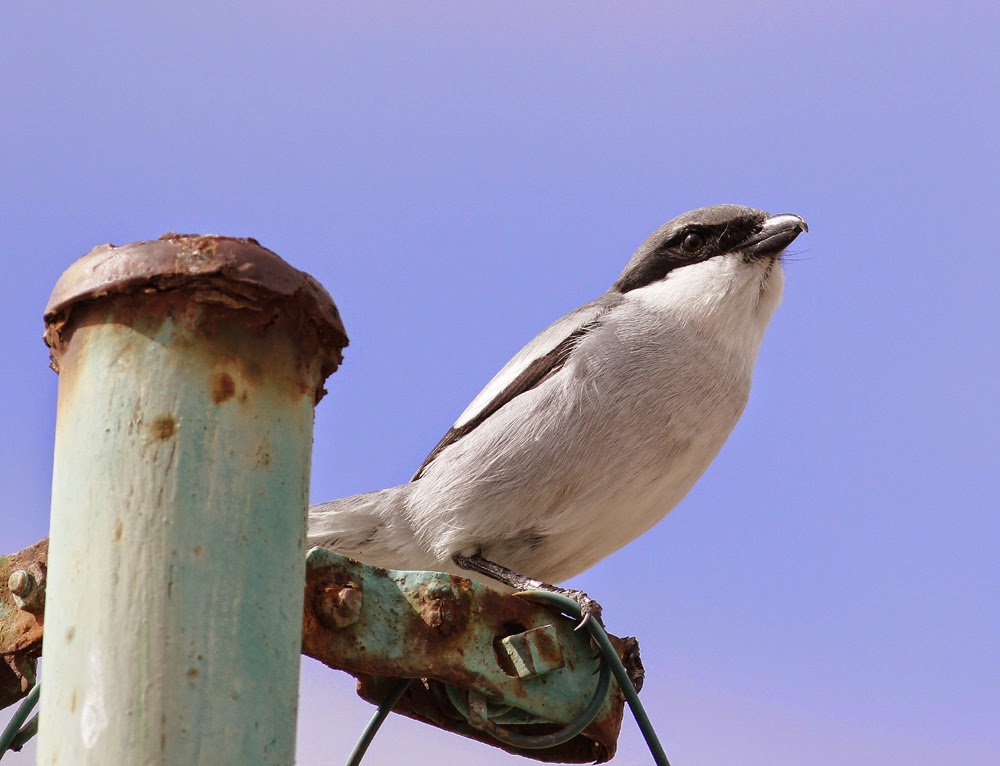My notebook told me that I last did local birding on 16th January before the holiday to Lanzarote. It was time today to find some winter clothes, check out the local scene and forget the exotic birds and tropical sunshine of the Canary Islands.
There was a full moon and as the sun rose I waited at the appointed spot for a Barn Owl to appear but none did so I hightailed it to Conder Green.
Full Moon over Pilling
I thought the pool might be somewhat frozen following recent days of zero temperatures so I was pleasantly surprised to see lots of wildfowl scattered across the still open water.
There was a good count of 1 Goldeneye, 6 Little Grebe, 29 Wigeon, 52 Tufted Duck, 42 Mute Swan, 4 Greylag and 1 Black Swan, and then dead centre of the circulating throng, a single Pochard.
The Pochard is now so scarce in our area that to see even a solitary one is something of an occasion although I did think that it was here by way of tagging onto the unusually high count of Tufted Duck displaced from Glasson Dock half a mile away. Two Lapwing and 1 Oystercatcher on the island clearly have designs on the usual breeding spots.
Pochard
In the roadside creeks - 100+ Teal, 1 Spotted Redshank, 1 Snipe and “several” of both Curlew and Redshank. Towards the car park and alongside the road I found 4 Goldfinch, 10 Chaffinch and a pair of Pied Wagtails, together with good numbers of Starlings and House Sparrows in the vicinity of the farm buildings.
Spotted Redshank
Chaffinch
Starling
While the shallow pool at Conder Green was unfrozen after driving the half a mile to Glasson Dock I was surprised to see partial ice-cover, thus explaining why so many Tufted Duck had chosen to leave here, their normally preferred location. The "tuftie" count here was down to 12 with a similar count of 11 Goldeneye and a normal total of 45+ Coot.
Goldeneye
Goldeneye
Glasson Dock
I drove back to Pilling, passing several thousand Pink-footed Geese two fields back from the road and at a dangerous spot to park on the infamous A588 so I carried on to Fluke Hall. Lots of Snowdrops littered the woodland but I didn’t see too many birds, just a couple of Redwings, 2 Great-spotted Woodpeckers, a single Jay and several Goldfinch. I’m fairly certain I heard a couple of Siskin calls but a tractor went by and the chance was gone.
Snowdrops
The incoming tide began to drop a few birds into the thawing fields, in particular a nice count of 700 Lapwing, 260 Black-tailed Godwit, 70 Golden Plover, 70 Redshank and 45 Oystercatcher. The godwits tried to feed quite close to the road where they quickly found themselves disturbed by passing traffic. A flock of Black-tailed Godwits against a blue sky makes for a spectacular sight, the striking black & white configuration of their plumage when they fly being quite unique and unmistakeable in the world of wading birds.
Black-tailed Godwits
Black-tailed Godwits
In the distance I could see the geese had been disturbed from their field inland of the sea wall and were now flying out to the safety of the salt marsh. From Lane Ends car park and in the foreground of the picture below, a minimum of 7000 Pink-footed Geese plus 2 Barnacle Goose and a single White-fronted Goose. In the background, Heysham Power Station.
Pink-footed Geese, Pilling Marsh
A good morning of birding, and as is often the case, there’s nothing quite like birding one’s local patch. Who needs Lanzarote?
Linking today to Anni's Birding and Eileen's Saturday Blog.
Linking today to Anni's Birding and Eileen's Saturday Blog.


























































.jpeg)





.jpg)












